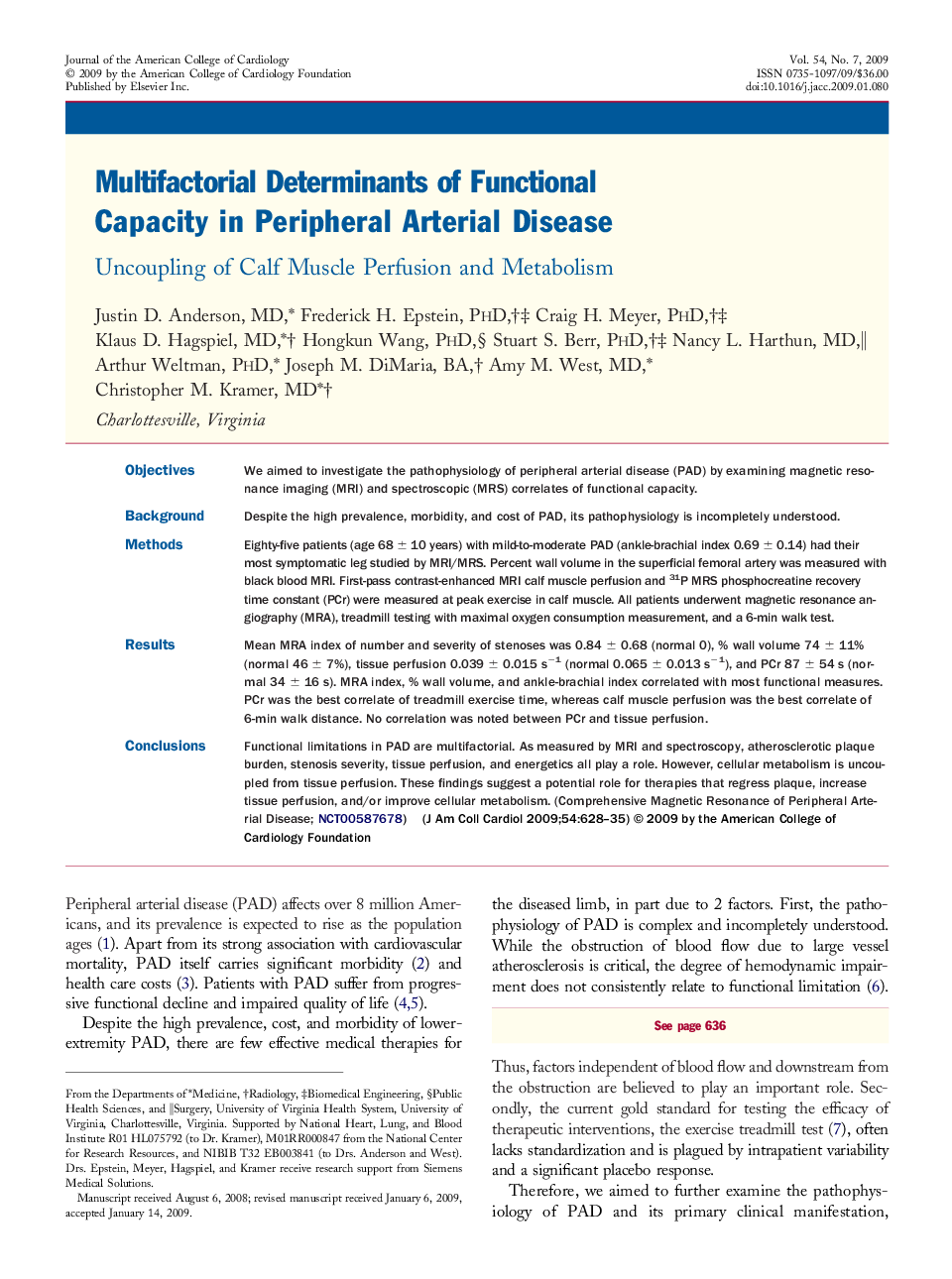| کد مقاله | کد نشریه | سال انتشار | مقاله انگلیسی | نسخه تمام متن |
|---|---|---|---|---|
| 2951883 | 1577356 | 2009 | 8 صفحه PDF | دانلود رایگان |

ObjectivesWe aimed to investigate the pathophysiology of peripheral arterial disease (PAD) by examining magnetic resonance imaging (MRI) and spectroscopic (MRS) correlates of functional capacity.BackgroundDespite the high prevalence, morbidity, and cost of PAD, its pathophysiology is incompletely understood.MethodsEighty-five patients (age 68 ± 10 years) with mild-to-moderate PAD (ankle-brachial index 0.69 ± 0.14) had their most symptomatic leg studied by MRI/MRS. Percent wall volume in the superficial femoral artery was measured with black blood MRI. First-pass contrast-enhanced MRI calf muscle perfusion and 31P MRS phosphocreatine recovery time constant (PCr) were measured at peak exercise in calf muscle. All patients underwent magnetic resonance angiography (MRA), treadmill testing with maximal oxygen consumption measurement, and a 6-min walk test.ResultsMean MRA index of number and severity of stenoses was 0.84 ± 0.68 (normal 0), % wall volume 74 ± 11% (normal 46 ± 7%), tissue perfusion 0.039 ± 0.015 s−1(normal 0.065 ± 0.013 s−1), and PCr 87 ± 54 s (normal 34 ± 16 s). MRA index, % wall volume, and ankle-brachial index correlated with most functional measures. PCr was the best correlate of treadmill exercise time, whereas calf muscle perfusion was the best correlate of 6-min walk distance. No correlation was noted between PCr and tissue perfusion.ConclusionsFunctional limitations in PAD are multifactorial. As measured by MRI and spectroscopy, atherosclerotic plaque burden, stenosis severity, tissue perfusion, and energetics all play a role. However, cellular metabolism is uncoupled from tissue perfusion. These findings suggest a potential role for therapies that regress plaque, increase tissue perfusion, and/or improve cellular metabolism. (Comprehensive Magnetic Resonance of Peripheral Arterial Disease; NCT00587678)
Journal: Journal of the American College of Cardiology - Volume 54, Issue 7, 11 August 2009, Pages 628–635